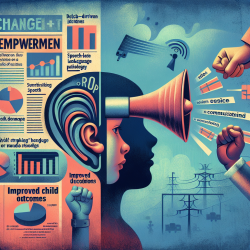Introduction
In the ever-evolving field of speech-language pathology, staying informed about external influences on our practice is crucial. One such influence is the media, which shapes public discourse and policy, impacting the environments in which we work. The study titled "News media coverage of extreme risk protection order policies surrounding the Parkland shooting: a mixed-methods analysis" provides valuable insights into how media coverage can influence public perception and policy, offering lessons that can be applied to our field.
Understanding the Research
The research conducted by Pallin et al. (2021) examined the frequency and content of news media coverage of Extreme Risk Protection Orders (ERPOs) following the Parkland shooting. The study found a significant increase in media coverage of ERPOs, with narratives often focusing on political figures and lacking evidence-based discussions on policy effectiveness. This highlights the media's role in shaping public understanding and policy discourse.
Implications for Speech-Language Pathology
As practitioners dedicated to creating positive outcomes for children, we can draw parallels between the study's findings and our practice. Here are some key takeaways:
- Data-Driven Advocacy: Just as the study emphasizes the need for evidence-based media narratives, we must advocate for data-driven decisions in our practice. Utilizing research to support our interventions can enhance credibility and effectiveness.
- Media Literacy: Understanding how media shapes public perceptions can help us communicate more effectively with stakeholders, including parents, educators, and policymakers. By crafting clear, evidence-based messages, we can influence perceptions and policies that affect our field.
- Policy Engagement: Engaging with policy discussions, much like those surrounding ERPOs, can help us advocate for policies that support children with speech and language needs. Staying informed about legislative changes allows us to be proactive in shaping supportive environments.
Encouraging Further Research
The study underscores the importance of continued research into how media influences public perception and policy. As speech-language pathologists, we can contribute to this body of knowledge by investigating how media representations of speech and language disorders affect public understanding and support for our work.
Conclusion
By applying the insights from this research, we can enhance our practice and advocacy efforts. Let us remain committed to data-driven decisions and proactive engagement with media and policy to ensure the best outcomes for the children we serve.
To read the original research paper, please follow this link: News media coverage of extreme risk protection order policies surrounding the Parkland shooting: a mixed-methods analysis.










